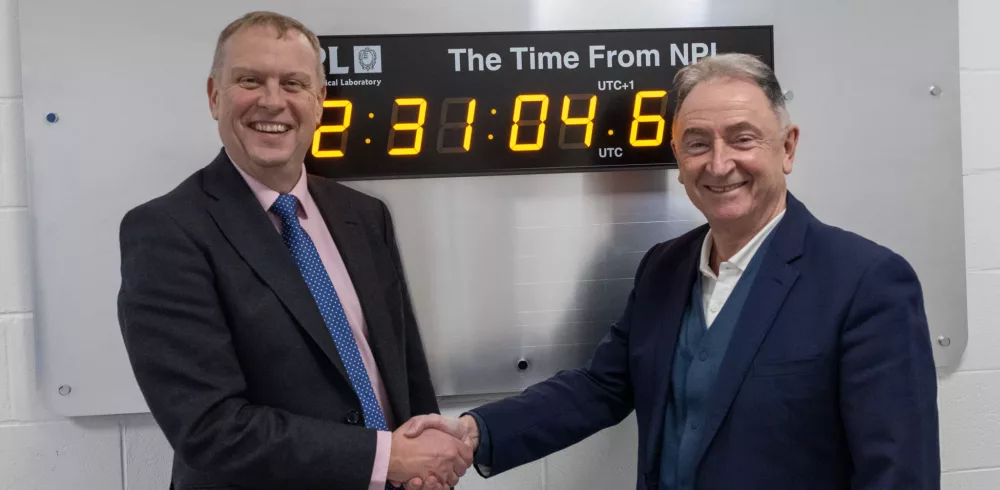The National Physical Laboratory (NPL) has launched the first of three innovation nodes with a focus on the application of accurate and precise timing for new technologies and products for sectors including transport, telecommunications, fintech, and quantum.
The nodes have been developed in partnership between NPL and the host organisations, the University of Strathclyde, the University of Surrey, and Cranfield University.
The innovation nodes are part of NPL’s National Timing Centre (NTC) programme the UK’s first nationally distributed time infrastructure that provides secure, reliable, resilient and highly accurate time and frequency data. NTC will aid the acceleration of new technologies such as time-critical 5G and 6G applications, next generation automated factories and connected autonomous vehicles.
The innovation node at the University of Strathclyde was officially launched by Dr Peter Thompson, CEO at NPL and Professor Sir Jim McDonald, Principal and Vice Chancellor of the University of Strathclyde. The launch is part of a wider two-day programme of events that showcases the breadth of work delivered by NPL and gives Scottish industry access to NPL’s extensive capabilities in quantum and timing. The programme underpins NPL’s long history of collaboration in these areas with the University of Strathclyde.
During their development, the three node sites hosted feasibility and demonstrator projects funded by Innovate UK, the UK’s national innovation agency. In total, 26 projects were supported with technical consultancy and access to high accuracy timing signals to enable the development of new products and services.
The projects that accessed traceable signals from the innovation nodes include an initiative to establish the evidence base for redistributing Positioning, Navigation and Timing (PNT) data to air- and ground-based autonomous systems in a smart city infrastructure environment and to demonstrate the technologies required for safe, reliable, and secure autonomous transport. Other projects include the development of innovative products and services to accurately measure electricity grid performance, which rely on a resilient timing reference.
Dr Leon Lobo, Head of the National Timing Centre (NTC) Programme, said, “Time is an invisible utility that underpins our digital infrastructure, from synchronizing the energy grid and telecom networks to timestamping financial trades. The close collaboration with Strathclyde will offer industry and academia access to reference timing signals to stimulate the development of new products and services, necessary to enable resilient time for the future.”
Professor Paul Griffin, of Strathclyde’s Department of Physics, said, “GPS and its equivalent systems provide timing signals which are used around the world to provide accurate time. Unfortunately, GPS and similar signals are very weak and can easily be jammed or spoofed. The goal of the NTC is to provide robust timing for the UK that does not depend on GPS.
“There are atomic clocks installed at Anthorn in Cumbria, where there is a powerful eLoran (Enhanced Long Range Navigation) transmitter which is very difficult, but not impossible, to jam. Chronos Technology, a UK-based global provider of advanced timing, synchronisation, and smart technology solutions, will utilise our clock to align the clocks at Anthorn to UTC within the NTOL project (NPL Time Over eLoran).
“Chronos will demonstrate the broadcast of the NPL timebase via the eLORAN, which will be received and decoded by Strathclyde’s Power Networks Demonstration Centre (PNDC). “
NPL is open to collaboration with industry and academia to access the innovation nodes for traceable and high accuracy timing signals. For more information and to get in touch, visit http://www.npl.co.uk/ntc/innovation-nodes
Manufacturing & Engineering Magazine | The Home of Manufacturing Industry News















